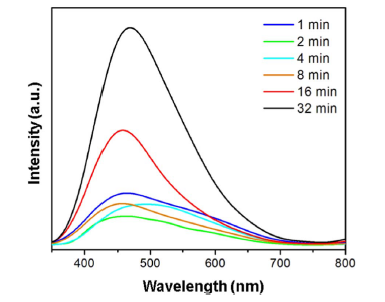
Luminescent and gas sensor properties of the ZrO2:Hhpa:Eu3+ Hybrid Compound
Abstract: Luminescent complexes of rare earth have been extensively studied in different fields of research improving the industrial development of these materials for their utilization as electroluminescent displays, catalysts and biomaterials. The interest in rare earth compounds having aromatic ambidental ligands has increased since it was found that they can act as light collectors (antenna effect), thus bypassing the weak absorption of the lanthanides and resulting in highly efficient luminophors. In this work ZrO2 was prepared by the hydrothermal microwave method (HMM) at 140 °C for 32 min. The hybrid materials was obtained using the previous ZrO2 dispersed in distilled H2O, to which was added Eu3+ and the 3-hydroxypicolinamide (Hhpa), and then stirred for about 3 h. The materials were analyzed by X-ray diffraction (XRD) and Transmission electron microscopy (TEM). The photoluminescent properties were investigated through their excitation and emission spectra, and gas sensor studies were also performed. It was observed the presence of completely crystalline powders for all materials, and XRD peaks were indexed to the tetragonal phase of ZrO2 (JCPDS 50-1089). TEM micrographs reveal a spherical nanostructure pattern presenting an average diameter of 4 nm. Excitation and emission spectra revealed the characteristic peaks of the Eu3+ transitions. The studies of these powders as gas sensors showed a significative change in the electric resistance for the hybrid material.
Author(s): Rosa, I. L. V.; Tavares, F. A.; de Moura, A. P.; et al.
Journal of Luminescence
Volume: 197 Pages: 38-46 Published: 2018
DOI: https://doi.org/10.1016/j.jlumin.2017.12.046
PDF: Luminescent and gas sensor properties of the ZrO2HhpaEu3+ Hybrid Compound




